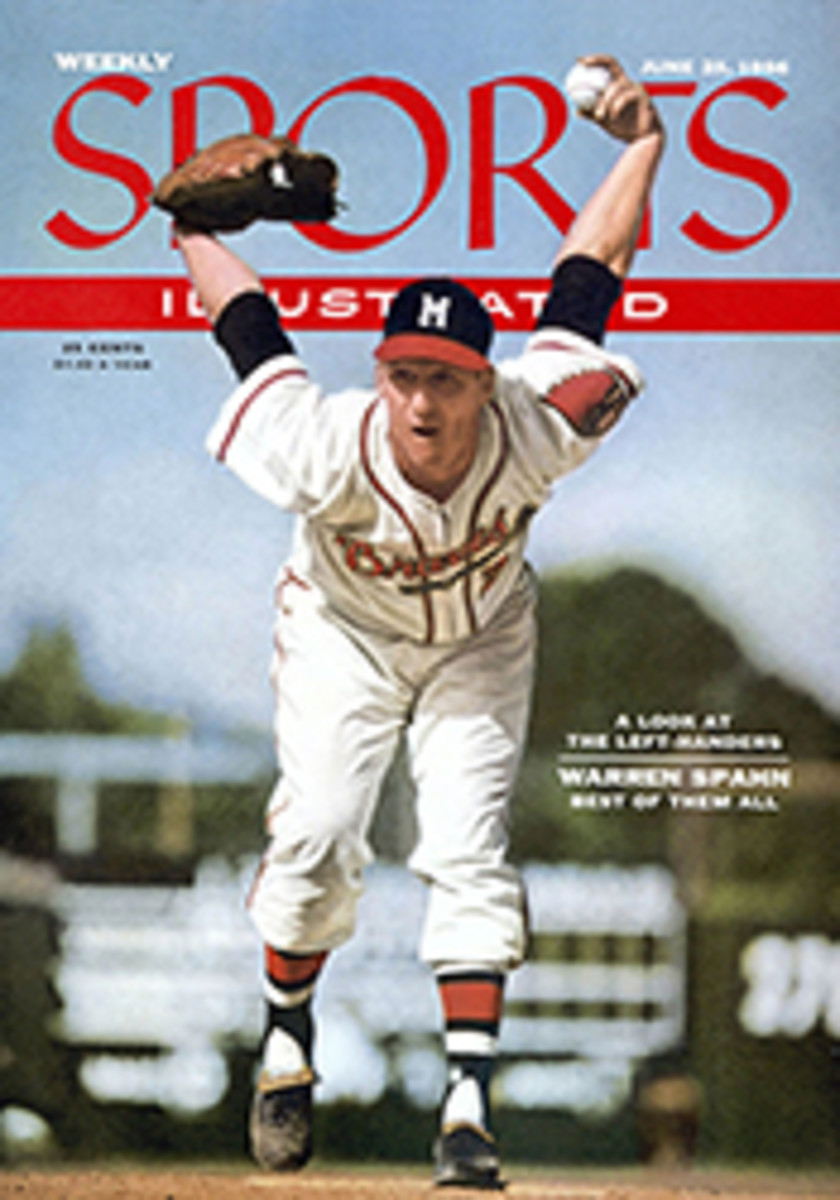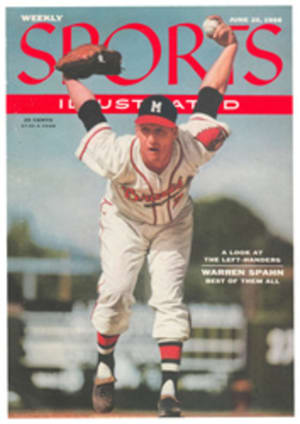
ADMIRALS AWAY!
The ground swell of Olympic excitement will mount a little higher next weekend when the biggest concentration of American oarsmen in the past four years will crowd into Syracuse, N.Y. for the tryouts for the U.S. rowing squad. Beginning June 28 more than 60 racing shells will spend three days skimming down the 2,000-meter course on Lake Onondaga. When the last heat has been rowed 23 men, their hands raw and their stomachs scraped by the thump of the oar handles after each stroke, will have pulled themselves onto the first team of the squad that travels to Melbourne next November.
The eliminations will be run off in seven different kinds of boats, the smallest the 26-foot single sculls in which one man, using two oars, shoots down the course in seven and a half to eight and a half minutes. The largest are the familiar eight-oared shells that can cover 2,000 meters in six to seven minutes under good conditions. In between are the double sculls (two men, two oars each), pair with coxswain (two men, one oar each, cox steering), pair without coxswain (steered by varying the pull on either oar), four with cox (four men, one oar each, cox steering), and four without cox (steered by a foot-operated tiller).
In each category the favorites have been roughly defined (see box) by early-season performance; but in the concentration of crack oarsmen at Syracuse, only one could fairly be called a sure bet for the Olympic team. This is Jack Kelly Jr., brother of Princess Grace of Monaco, son of the 1920 Olympic single sculls champion, and himself the U.S. Olympic representative in the singles in both 1948 and 1952. Charles Logg and Tom Price, who set the rowing world on its ear in 1952 by becoming the first Americans to win the Olympic pair without coxswain (they had practiced the event for less than three months), face stiff competition at the trials this year from James Fifer and Duvall Hecht, each pair having beaten the other once during the season.
In the other two- and four-oared events, the races are sure to be tight, and in the eights there is a chance for one of the most thrilling duels in the history of the U.S. Olympic trials.
Cornell and Yale qualified themselves last weekend as two of the principals in the duel by trouncing all comers in two meets which climaxed the college season. Cornell, prerace favorite over 11 other entries in the Intercollegiate Rowing Association regatta at Syracuse, rowed true to form by running away with the three-mile test. Going into the last quarter mile, half a length ahead of Wisconsin and Stanford, Cornell's eight took their stroke up to 34 and drew away from the field with beautifully spaced strokes. They finished two and a half lengths ahead of an unheralded Navy undergraduate team. Wisconsin was a surprising third, while previously undefeated Washington nosed out Stanford for fourth.
That same day at New London, Conn. the Yale eight which gave Cornell its only defeat this season in the Carnegie Cup on May 5, showed that it was still the best Eli boat in many a year, taking Harvard by five lengths in the 91st running of their annual set-to. Whether Yale is now ready and able to reverse her agonizing loss by a yard to Cornell in the Eastern championship on May 12 is one of the most intriguing questions the Olympic trials will answer.
No matter how impressive Yale and Cornell were, however, they stand challenged by the most colorful crew entered in the trials—the Navy officers, who are bidding for a chance to break all Olympic rowing precedents by repeating their 1952 victory at Helsinki.
When the "Admirals" were put on special duty at Annapolis last spring, to see if they could row themselves into shape for the tryouts, there was some reasonable doubt that they could shake off the accumulated rust and plain fat from two noncompetitive years since graduation. In their early skirmishes with college opponents they were, in fact, disappointing. Harvard, Navy and Penn all beat them in the May 5 Adams Cup regatta.
But on May 20 the Admirals beat Wisconsin and Penn decisively in the American Henley at Philadelphia. Then, on June 6 in an impromptu race with Princeton on Lake Carnegie, they were, suddenly, very impressive indeed. They beat Princeton by two and a half lengths over 2,000 meters of dead calm water, and were clocked in 6:01. Wind, current and waves often make comparisons of rowing time untrustworthy; but Navy Coach Rusty Callow discovered that the officers had equaled their best 1952 pre-Olympic trial time.
"They look like they're pretty much back to where they were in 1952," said Callow after the Princeton workout. "The turning point came about three weeks ago; once the warm weather hit us, they began to sweat off some of that lard and we have the weight problem licked. They rowed a 6:03 and a 6:01 the week before the trials in 1952 and then rowed a 5:57.8 in the race itself. That was very good time for us. We won by three lengths, but this year Cornell and Yale are better than they were in 1952."
While the college crews were able to sharpen up in last week's races at Syracuse and New London, the officers have had no further competition since the time trial at Princeton. But it is now obvious that the 1952 champions are within striking distance of their goal and that their dream of a second Olympic victory must be considered with respect.
[originallink:10469171:43240]

